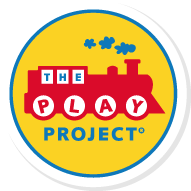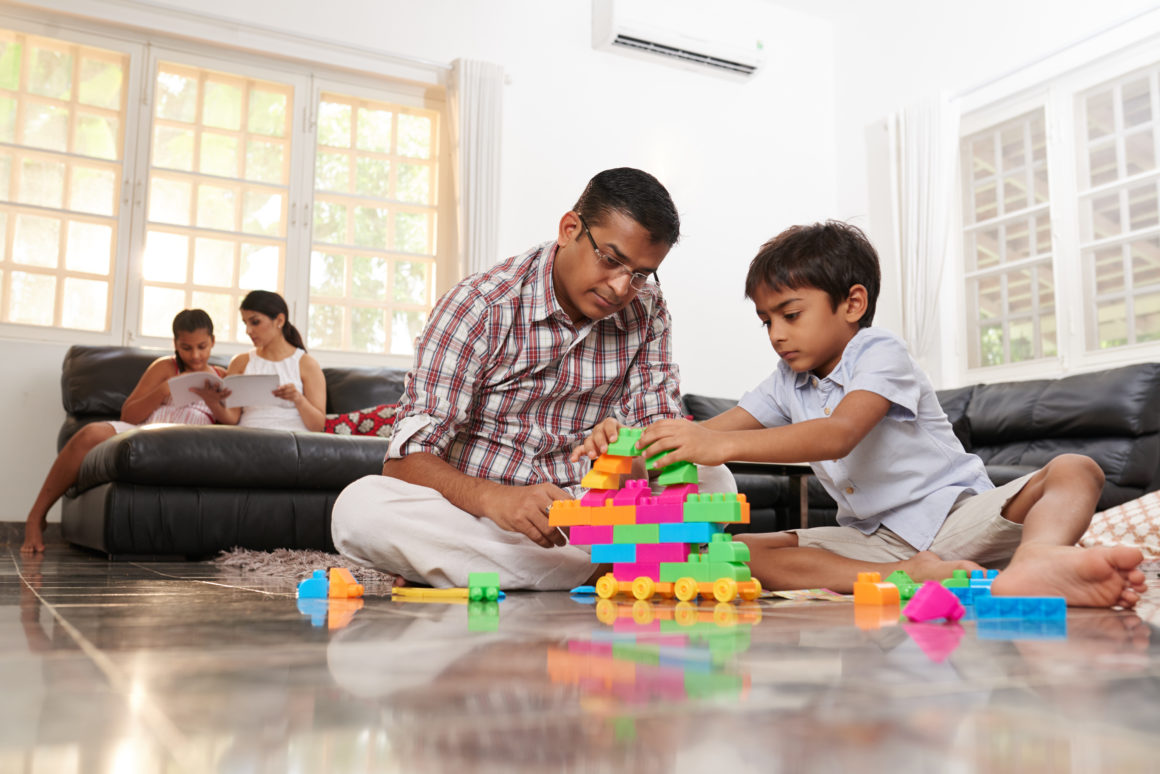Written by Richard Solomon, MD
Children with autism love to keep the world the same. It is this love of sameness that causes them to fixate on repetitive behaviors and interests that defines the disability. If allowed to stay in their own world doing the same things, their developmental outcomes are among the worst outcomes of any developmental disability. Ironically, due to ‘brain plasticity’ a majority of children with autism are capable of making new connections between brain cells (i.e. neurons), which can result in major developmental gains. Recent evidence1 suggests that 10-15% of these children can outgrow their diagnosis!
As a developmental and behavioral pediatrician whose practice over the last 30 years has been dedicated to caring for children with autism and their families, I have seen how children with autism progress over time, from wanting to keep the world the same to being socially functional in the world. In this blog, I want to talk about how this happens.
Let’s start with the essential work of Stanley Greenspan MD and Serena Weider PhD. Dr. Greenspan (1941-2010) was a child psychiatrist, developmental theorist, and internationally known author whose theoretical framework for the DIR (Developmental Individual-differences and Relationship-based) model has influenced an entire generation of pediatric professionals and child developmentalists. He and Serena Weider PhD, a brilliant child psychotherapist, author, and DIR’s co-founder, elaborated on the DIR framework in a series of books and monographs that have become classics in the field of relationship-based intervention for children with problems in communicating and relating2.3.4.. You might know their work by the name ‘Floortime’. Both Stanley and Serena have been my mentors and close colleagues; their work has deeply affected my thinking and practice.
In this blog, I want to take one of DIR’s central tenets and one of Dr. Greenspan’s most profound insights into how children develop—“The Affect Diathesis Hypothesis”—to explain in specific and practical ways how we help children with autism reach their full human potential by ‘helping children with autism change what they love’. I believe that Dr. Greenspan’s insights have implications for us all.
I’ll admit that this term—The Affect Diathesis Hypothesis—is intimidating. Stanley, by his nature, was an abstract thinker and theorist (as well as a brilliant clinician). I’m a developmental and behavioral pediatrician. Pediatricians take complex ideas and translate them into ‘parentese’. So, in our model called The PLAY Project, where we coach parents on the best ways to engage their hard to engage children with autism, we call Dr. Greenspan’s theoretical term ‘Fun with People’.
Fun is ‘affect’, the feeling life of the child. To have ‘Fun with People’ is ultimately what we want for children with autism. One of our mottos in The PLAY Project is: “When you do what the child loves, the child will love to be with you.” So that’s ‘Affect’. ‘Diathesis’ is Latin for ‘disposition’ or ‘tendency’, for example the tendency of the flower to turn toward the sun. Dr. Greenspan’s ‘Hypothesis’ is this: When those of us who care for children with autism connect with the child’s feeling life (affect), their natural inborn tendency (diathesis) will be to grow in the right developmental direction just as a flower grows when you give it water, nutrients, and sunshine. The ‘Affect Diathesis Hypothesis’ then takes as a foundational axiom that children grow primarily from the inside out. While Greenspan, and other developmental theorists like Vgotsky5 and Piaget6 (who I’ll come to in a minute), would never deny the importance of education, teaching, and/or the environment that promotes developmental growth, he would still maintain that the most important impetus for the child’s potential comes from within. I have been a happy witness to this hypothesis, having seen so many children with autism make progress.
So, the secret to helping children with autism change what they love, is to start by accepting what they love! This paradox has its complications. For instance, this idea of accepting what the child loves is, not surprisingly, hard for parents many of whom have said to me with a certain amount of skepticism and astonishment, “You want me to do what my child is doing?! Seriously? To be honest, Dr. Rick, I really don’t like to even see his lined-up trains, let alone join him.” But I insist—based on decades of experience—that when caretakers accept what the child wants/loves, that is the fastest way to help their child make gains in their development.
But there is a catch. I explain that we start with what the child loves in a way that is fun so that the child, at first, doesn’t mind us being with them and lets us into their world. Then, if we are fun and gentle and honor the child’s ideas—what we call ‘following the child’s lead’—the child will want us to be with him. Why? And here’s the catch. Because it is more fun (i.e. there is more positive ‘affect’). My mom and dad are fun. Soon parents are interacting. The child is actually looking at them, seeking them, playing back and forth with them. Loving being with the parents. This begins to change their child’s autistic tendencies to isolate.
Eventually we can even add our own ideas and challenge the child to move up developmentally. This is the work of Vgotsky who said we cannot play too low or too high but must play at the ‘just right’ level (what he called ‘The Zone of Proximal Development’)5. Parents tend to play to high. They want to teach. They want to prompt words. They want the child to be successful in life. If their child was a house, they would want a beautiful, perfect house. Of course. This is what we all want for our children.
But every beautiful house must have a solid foundation. The foundation is below ground. The foundation, according to Greenspan and Weider, for all social relationships involves first paying attention to each other, then engaging with each other, and interacting in a back and forth fashion. I call this the ‘interactional process’. “IP”. We normally don’t think about IP. We don’t think: “I’m looking at him. I’m nodding my head. My hands are gesturing.” No, IP is unconscious. Typically developing children are naturally social. They seek interaction. You don’t have to teach IP. But, by definition, children with autism don’t pay attention, don’t engage easily, don’t interact in a back and forth fashion. So, for children with autism, we must think about IP, the interactional process. This forms the solid foundation for the beautiful house of the future.
Remember, Vgotsky also says, and Greenspan agrees, that we cannot merely follow the child. We must challenge the child at the just right level (Vgotsky) and ‘woo’ the child upward (Greenspan). And so over time we help the child move upward in a series of ‘Piagetian’ stages6. Jean Piaget, perhaps the most famous of child developmental theorists, said that development progresses by distinct, increasingly complex stages6. Greenspan applied Piaget’s stage theory to children with autism (and other children with problems communicating and relating) and described the progression from autistic isolation to becoming a full social partner in his Functional Emotional Developmental Levels of which there are 6 early stages and 9 total. I am focusing on the 6 earlier stages that all children, including typically developing children, must achieve if they are to be socially functional.
Using Greenspan’s developmental stage approach, I realized that, when we are successful in promoting developmental growth, there is a distinct and orderly progression of ‘what the child loves to do’ that follows exactly, by the way, how the young typical child develops. (For a more extensive list of activities click here):
- First (at FEDLs 1-2), children will love sensory-motor stimulation (I hesitate to even call it play at first). Here are some examples: Lining up trains is a source of visual stimulation; jumping is a form of proprioceptive stimulation (or ‘stim’); and humming is an auditory stim. These children love pure sensation.
- Next (at FEDL 3), children love simple cause and effects activities. Doors that open and close; light switches that go on and off; physical activities like swinging in a blanket that goes back and forth; jumping games that go up and down and, of course, peek-a-boo.
- Then (at FEDL 4), there is a love of sequences and social games like capture, release, and chase (“I’m. .. . gonna. . .get you); simple hide (under a blanket) and seek; ring around the rosy, all fall down; throw the child (gently) on the bed and then tickle tickle tickle.
- As the child makes more progress developmentally, they will (at FEDL 5) love simple pretend. Feeding a baby doll; or simple sword fighting; using the stethoscope or the otoscope, or giving a shot from the doctor’s kit, but not ‘being’ the doctor. That’s next.
- Last, when we are really successful in wooing the child upward, the child with autism will, very predictably (at FEDL 6), love rich pretend play: ‘Good guys and bad guys’; pretending to be the ‘doctor’ or ‘teacher’; driving the children to school on the school bus, having a tea party with stuffed animals.
In order to be socially functional all children must successfully climb the ladder of these stages. There is no way around them. Children with autism take longer than typically developing children do because autism (by its nature as a developmental disorder) usually costs the child at least 2 years of his or her developmental life. So, age is not as important as the developmental progress up the levels which can take time (sometimes a long time). This ‘lost’ time can, eventually, be made up with intensive intervention over 2-4 years if the child with ASD has the potential. A common related question on parents’ minds is ‘When will my child talk?” My answer is, “When the child becomes socially functional at Greenspan FEDLs 1 thru 4, then language very often emerges spontaneously and unprompted. It’s the child’s developmental ‘diathesis’ to talk.
Q: So, how do we help children with autism change what they love to do?
A: By accepting what they love, interacting with them around what they love, and showing them over time that playing at slightly higher levels is more fun.
Then their feeling life (affect) will drive their tendency (diathesis) to become more functional socially and, if we are successful and the child has the potential, their house will be a very very nice house, indeed. Their interests will evolve toward play with others, enjoying pretend play and using their imaginations, and having an increasingly complex emotional life. This evolution depends on us, the caregivers, doing what the child loves early on so the child will love to be with people.
References
1FeinD, et al (2013). Optimal Outcomes in Individuals with a History of Autism. J Child Psychol Psychiatry.54(2): 195-2-5
2Greenspan, S. I. (1992). Infancy and early childhood: The practice of clinical assessment and intervention with 480 emotional and developmental challenges. Madison: 481 International Universities Press.
3Greenspan, S.I. and Weider, S. (1998). The child with special needs; Encouraging intellectual and emotional growth. Cambridge: MA.: DeCapo Press,
4Greenspan, S. I., & Wieder, S. (2005). Infant and early childhood mental health: A comprehensive developmental approach to assessment and intervention. Arlington: American Psychiatric Publishing, Inc..
5A short article on Lev Vgotsky: https://www.scholastic.com/teachers/articles/teaching-content/pioneers-our-field-lev-vygotsky-playing-learn/
6A short article of Piaget: https://www.scholastic.com/teachers/articles/teaching-content/pioneers-our-field-jean-piaget-champion-childrens-ideas/

